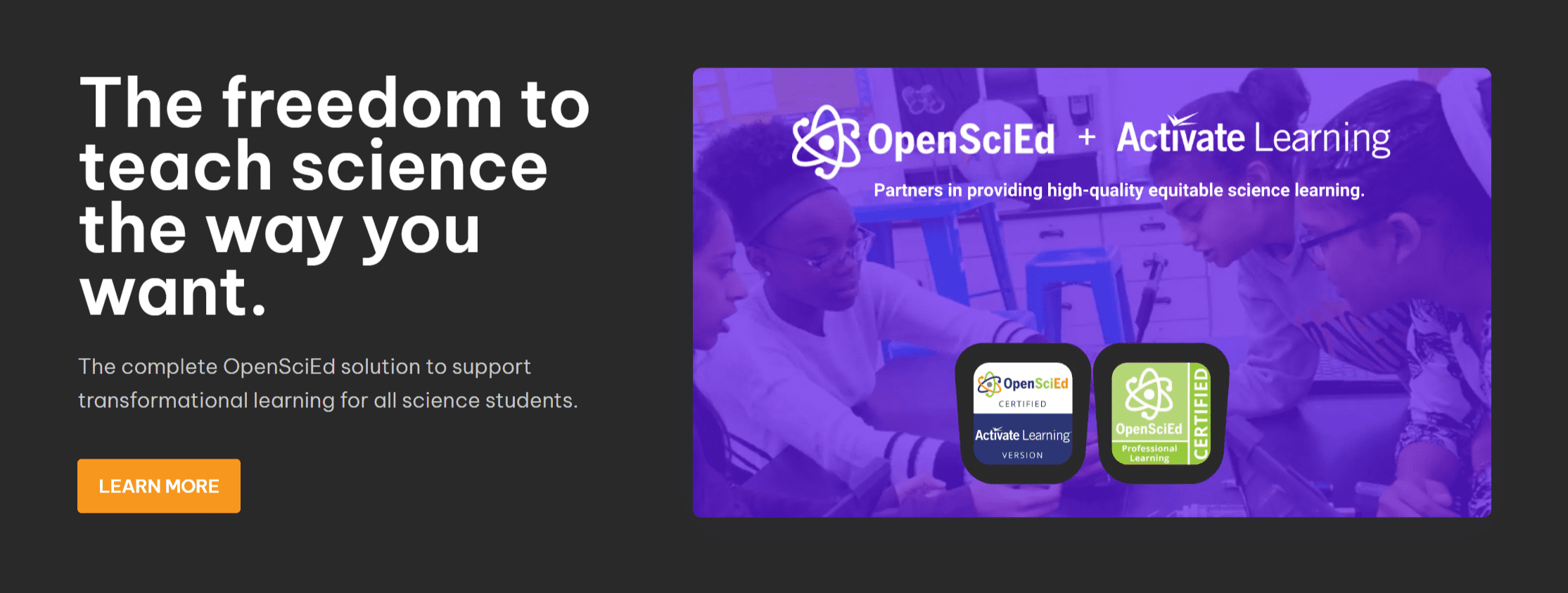How to Create a Successful OpenSciEd Implementation Strategy

Quick Take: Expert advice for a successful OpenSciEd implementation strategy for science educators and school administrators.
One of the defining characteristics of the modern information age has been the democratization of knowledge thanks to the internet and advancements in how we think about educating our young people. The open-source nature of today's information landscape has completely disrupted traditional education and it brings phenomenal new resources to a vast audience that previously did not have access.
For teachers in STEM, this has been a game-changer - providing a wealth of resources that can be leveraged to improve the quality of the education they provide. In a search for deeper and more nuanced learning opportunities, many have turned to open-source resources for a fresh perspective that is aligned with modern reality. One of these initiatives is OpenSciEd, an open-sourced science curriculum that is taking the world by storm.
What is OpenSciEd and Why Is It So Popular?
OpenSciEd was created with the mission of providing high-quality science learning materials and curriculums to teachers for free - to help even the playing field and give more students the opportunity to benefit from the very best teaching methods in the world. It was launched two years ago and has quickly gathered steam as the preeminent science resource methodology which is aligned with the Next Generation Science Standards (NGSS).
The curriculum has resonated with both teachers and students alike because it uses research-backed study methods to improve retention, it has been extensively tested and adapted for the modern world, and it is highly scalable and customizable - allowing educators to adapt to their own context. Here at Activate Learning, we're extremely excited about the promise of OpenSciEd because it shares the same pedagogical DNA as our popular IQWST curriculum.
The Challenges of Implementing a New Science Curriculum
One of the most common reasons that traditional science education has fallen so far behind is because of the challenges that come with implementing a new curriculum. It is an overwhelming proposition to sit down and decide to go in an entirely new direction - even for forward-thinking and seasoned educators.

Recently we heard from a middle school teacher who said that "[OpenSciEd] is vetted and designed by teachers, and provides all print resources including slides to walk through the process with a mix of group, independent, and partner activities. The main negative is that can be very overwhelming to dive into."
In addition, if you don't have support from management, high-quality training for your teachers, and empathy for the current workload - you're going to run into issues. These are well-detailed problems that have been seen time and time again by schools that don't take a nuanced approach to new curriculum implementations.
That's why the success of OpenSciEd is not only about the curriculum itself. It often comes down to the level of implementation that will determine how well the new curriculum will perform. This is something that many schools get wrong as they get carried away with a shiny new NGSS-aligned tool, but don't pay enough attention to the implementation phase to actually reap the rewards.
The Non-Negotiables of a Successful OpenSciEd Implementation Strategy
Successful implementation of the OpenSciEd curriculum depends on these five pillars:
- Buy-in From Management. Getting this right requires everyone involved to be on the same page and to be equally invested in making the paradigm shift necessary to make OpenSciEd work. Without this, you're always going to be working across purposes.
- Training for Managers and Teachers. As with anything new, it's crucial that you manage the change carefully and provide the necessary training and support for your teachers so that they can effectively operate with the new curriculum.
- Anticipate Obstacles and Prepare For Them. Largescale curriculum change is going to bring about many challenges along the way and if you can learn from those who have tried it in the past and anticipate these concerns, you can be proactive in solving them - resulting in a much smoother experience.
- Clarify roles and responsibilities. Managing this shift should not be left to chance, and ideally, you should delegate specific roles and responsibilities to individual people who are accountable for those results. This helps to ensure that the project continues to move forward and that there are real stakes that encourage better alignment.
- Adapt and Refine. Every school is unique and you can't expect to simply import a new curriculum and be off to the races. It's going to take adaptation and refinement to craft a system that works for you in your unique circumstances, using what works and discarding the rest. This is always a work in progress and never something that gets 'finished'.
These are just a few of the key components that came out of research from Instruction Partners. But if you can get just these five components right, then you're well on your way to a successful implementation of OpenSciEd and its most important principles.
OpenSciEd Implementation Partners
There are several organizations that are official certified destitution partners of OpenSciEd and who can assist you with implementing the curriculum in the most efficient and effective way possible. These range across materials distributors, professional learning, and digital tools that can help you track your progress.
These providers can be important partners in transforming the promise of OpenSciEd into real results on the ground. It takes much more than a good, NGSS-aligned curriculum to create transformative science education. It also requires exceptional implementation if you are to leverage this phenomenal initiative.
If you'd like to learn more about Activate Learning's OpenSciEd implementation strategy and support, you can check out our website here. We also have a newsletter that will help you stay on top of the latest developments in the industry, and you can subscribe to that here.
* * * * *
.




